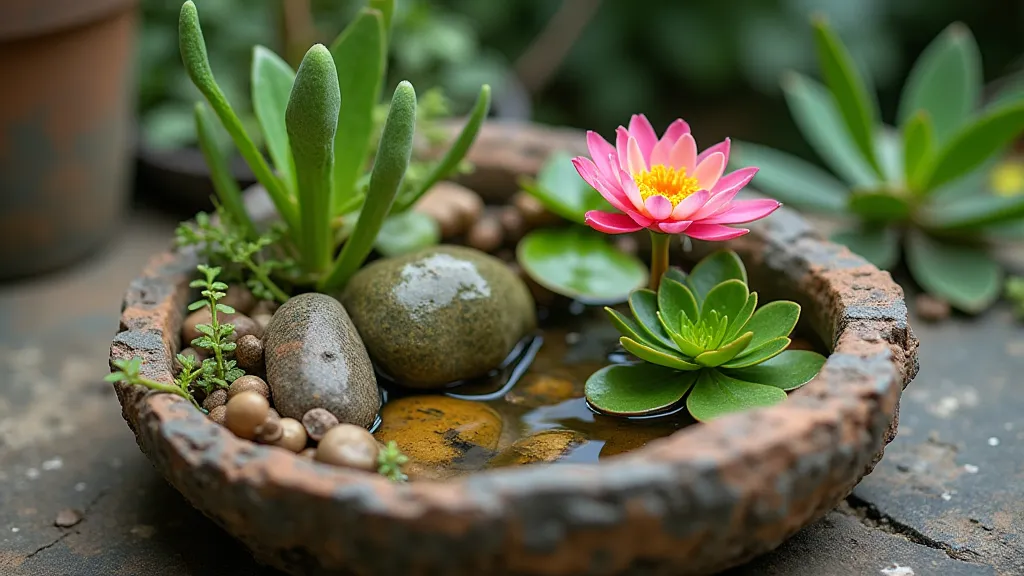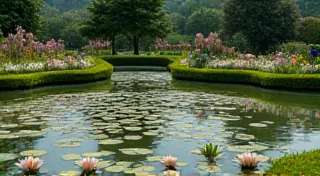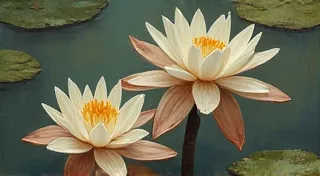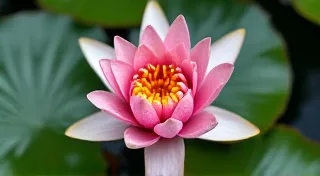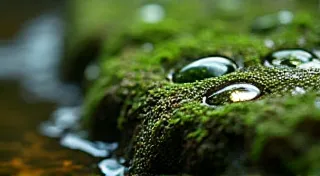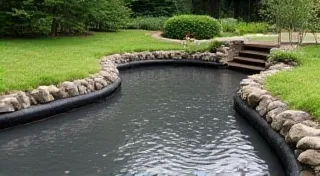Choosing the Right Water Lily for Your Pond
Water lilies are the jewels of any pond or water garden. Their elegant blooms and lush foliage add beauty and tranquility. However, selecting the right variety can be overwhelming given the vast array available. This guide will walk you through the key considerations to ensure you choose water lilies that will thrive in your pond and provide years of enjoyment.
Understanding Water Lily Types: Hardy, Tropical, and Miniature
Water lilies are broadly categorized into three main types: hardy, tropical, and miniature. Each has different requirements and characteristics.
Hardy Water Lilies
Characteristics: Hardy water lilies are native to temperate climates and can survive freezing temperatures. They bloom in cooler weather, typically from early spring to late fall. They generally have less vibrant colors than tropicals, often featuring shades of pink, white, yellow, and cream.
Climate Suitability: Ideal for zones 3-9 (check your specific zone!), making them suitable for most regions with cold winters.
Pond Size: Most hardy water lilies require a pond that's at least 18-24 inches in diameter, but some can grow quite large, requiring larger ponds.
Example Varieties: ‘Arc-en-Ciel’ (rainbow-colored), ‘Gladstone’ (bright yellow), ‘Waterlily Princess’ (light pink).
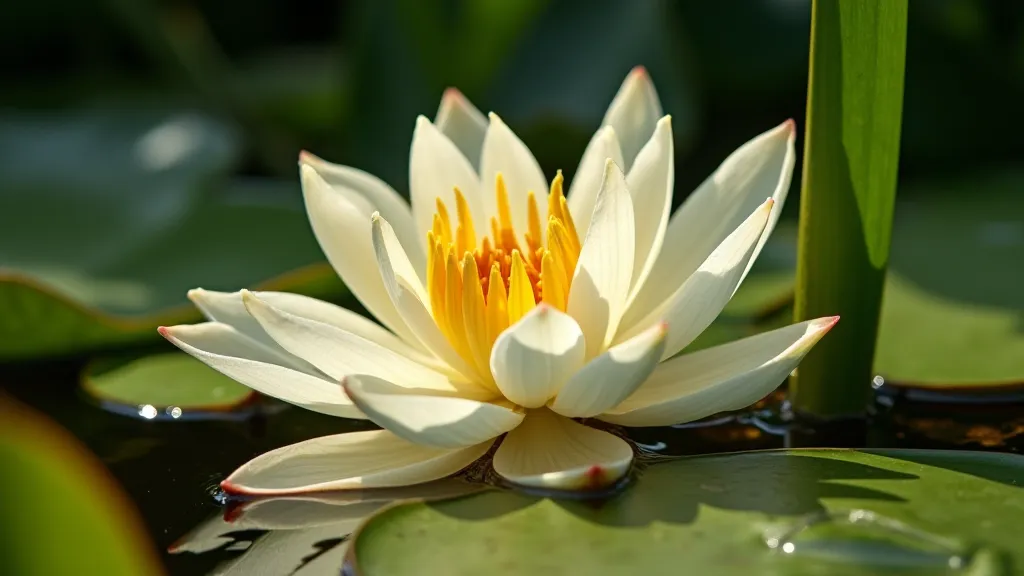
Tropical Water Lilies
Characteristics: Tropical water lilies are known for their stunning, vibrant colors – ranging from deep pinks and reds to oranges and yellows. They have larger, more intricately shaped leaves and are prized for their dramatic blooms. However, they are not frost-tolerant.
Climate Suitability: Best suited for zones 8-11 or can be grown in containers and brought indoors during colder months.
Pond Size: Tropicals generally need a larger pond, typically 24 inches in diameter or more, due to their larger size.
Example Varieties: ‘Red Flare’ (deep red), ‘Giant Amazon’ (huge leaves and flowers), ‘Hope’ (bright pink).
Miniature Water Lilies
Characteristics: Miniature water lilies are a great option for smaller ponds or containers. They have smaller leaves and flowers, but still offer beauty and elegance. They can be either hardy or tropical.
Climate Suitability: Hardy miniature varieties are suitable for cooler climates. Tropical miniatures need warmer conditions.
Pond Size: Can thrive in ponds as small as 12 inches in diameter, making them perfect for patio containers or smaller water features. Choosing the right size container and placement is vital; you might find further insights by exploring a guide to miniature water lilies.
Example Varieties: ‘Pygmaea Helvostella’ (yellow), ‘Sun Sprite’ (pink), ‘Danny’s Delight’ (red).
Key Factors to Consider When Choosing
Beyond the type, several factors influence your water lily selection:
- Climate: As discussed, determine whether you need a hardy or tropical variety.
- Pond Size: Choose a variety that is appropriately sized for your pond. Overcrowding leads to poor growth. Proper placement and depth are also crucial – for more details on achieving the perfect match, check out a guide on pond depth and water lily placement.
- Bloom Time: Some water lilies bloom continuously throughout the season, while others have a more limited bloom period. Consider your desired level of visual impact.
- Color Preference: Water lilies come in a wide range of colors. Choose a color that complements your pond and surrounding landscape.
- Sunlight: Most water lilies need at least 6 hours of direct sunlight daily to bloom well.
Placement and Planting
Water lilies are typically planted in aquatic pots filled with heavy clay or garden soil. Place the pot in the deepest part of your pond, ensuring the crown (where the leaves and roots emerge) is just below the water surface. Fertilize regularly with a water lily fertilizer to promote healthy growth and abundant blooms. Consider the visual impact of blooms alongside other aspects of garden design; you can appreciate the transient beauty and its role in narrative arcs by learning more about understanding ephemeral blooms.
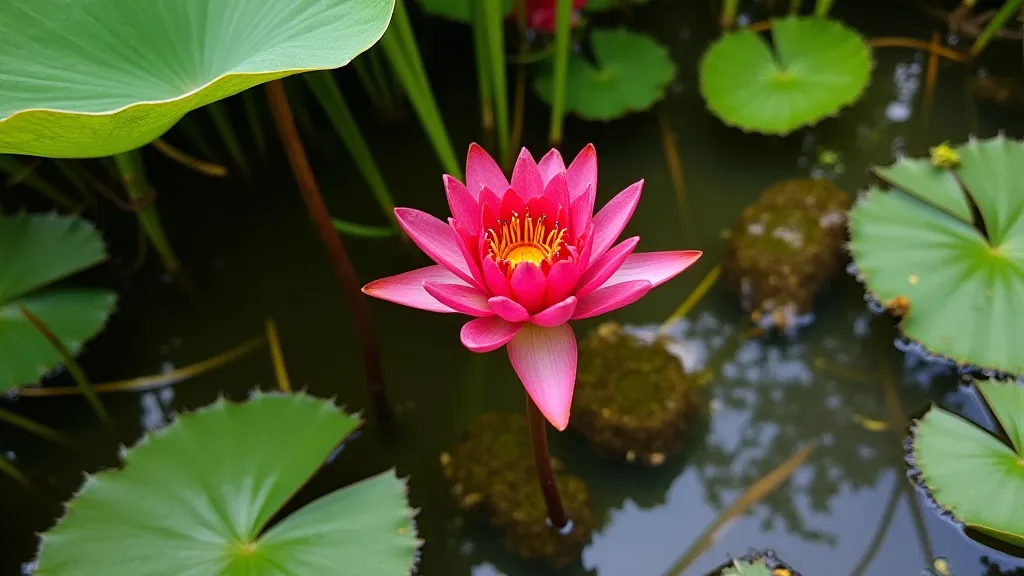
Troubleshooting & Tips
If your water lily isn’t blooming, it could be due to insufficient sunlight, nutrient deficiency, or overcrowding. Adjust accordingly to ensure optimal conditions. Regularly remove fallen leaves and debris to keep your pond clean and healthy. Providing sufficient nutrients is key, and often requires regular fertilization. A common issue is improper planting depth. If your lily is struggling, review the crown placement – it needs to be just below the water surface. Furthermore, the choice of soil matters; heavy clay is best for providing weight and ensuring the pot remains stable at the pond’s bottom. The overall aesthetic of your water garden should reflect a considered design; take inspiration from how transient beauty can inform a complete narrative arc, enhancing your garden's character.
Choosing a water lily is about more than just picking a pretty flower; it’s about creating a miniature ecosystem within your pond. Consider the other inhabitants of your pond – fish, frogs, and other aquatic life – and select water lilies that will coexist harmoniously with them. Certain fish, for example, may nibble on water lily roots, so choosing a variety with sturdier roots can be beneficial. The placement of your water lily can also impact its health and the overall balance of your pond. Ensure that it receives adequate sunlight while providing shade for other plants and aquatic life. Regularly observe your water lily for signs of stress or disease, and take appropriate measures to address any issues promptly. By providing a nurturing environment and carefully selecting the right variety, you can enjoy the beauty and tranquility of water lilies for years to come.
Beyond the practical aspects of planting and care, water lilies also hold a special place in cultural and symbolic meaning. Throughout history, water lilies have been associated with purity, enlightenment, and rebirth. In many Eastern cultures, the water lily is a symbol of spiritual awakening and is often depicted in art and literature. Incorporating water lilies into your garden can be a way to connect with these ancient traditions and create a space of peace and contemplation. As you cultivate your water lily garden, take the time to appreciate its beauty and the rich history and symbolism it represents.
